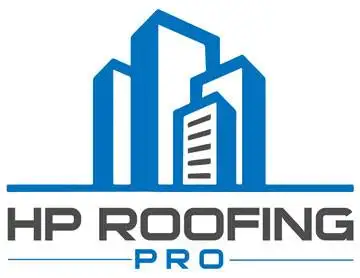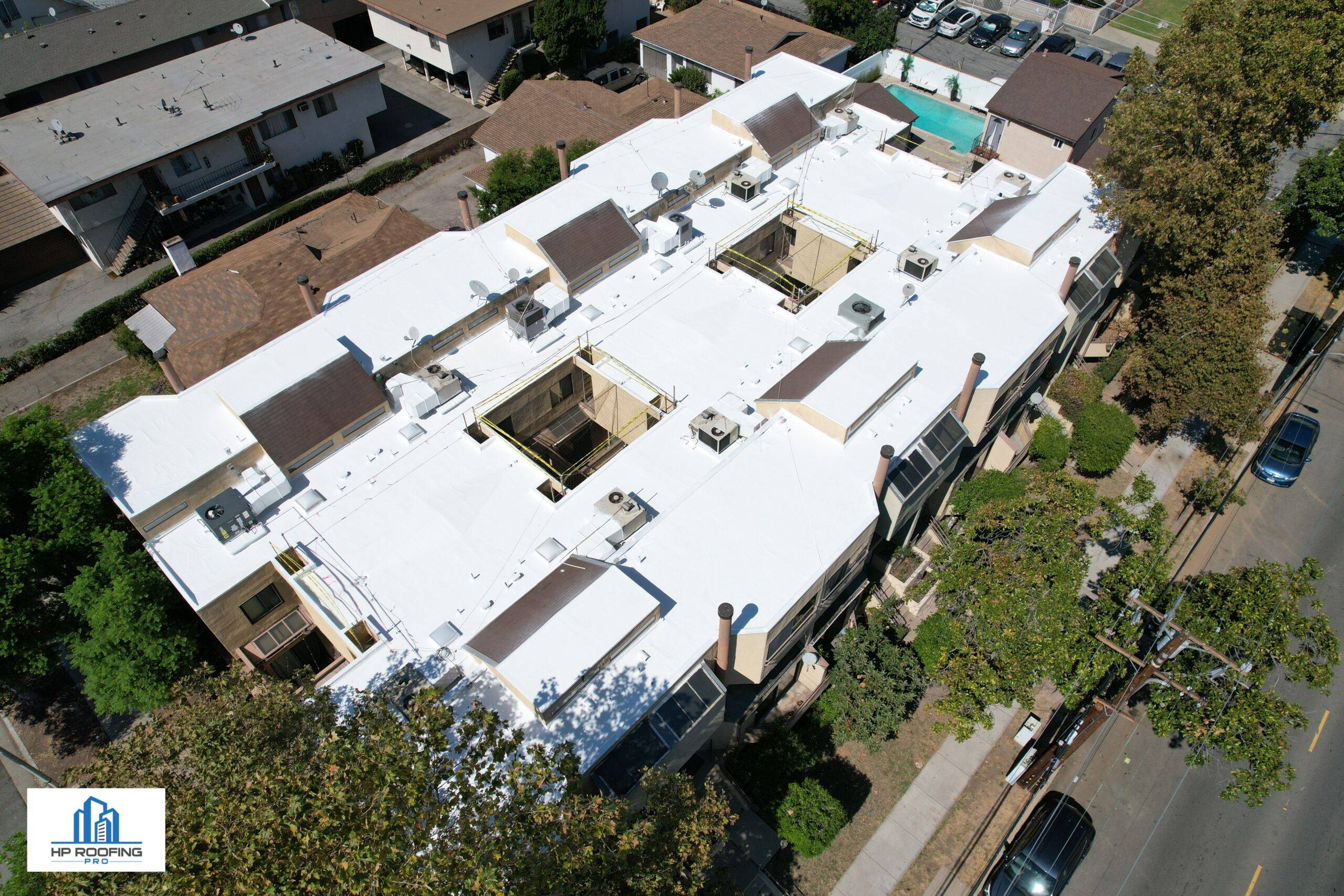Mon - Fri 7:00 am - 4:30 pm
601 South Palm Ave, Alhambra, CA 91803
Posted by hproofingpro No Comments on How Commercial Roofing Can Improve Your Building’s Energy Efficiency Roofing
How Commercial Roofing Can Improve Your Building’s Energy Efficiency
In the realm of commercial property management, energy efficiency is a priority. One area often overlooked when it comes to energy efficiency is commercial roofs. The right commercial roofing system, especially those with cool roofing features like acrylic coating, can significantly reduce energy costs and contribute to a building’s overall energy efficiency.
Choosing the Right Commercial Roofing Material
The choice of roofing material significantly impacts a building’s energy efficiency. Traditional materials like asphalt and tar absorb heat, increasing cooling costs. On the other hand, cool roofs or metal roofs reflect sunlight and heat, reducing energy consumption. Products with a high solar reflectance index (SRI) and thermal emittance perform better.
One of the most effective ways to enhance the energy efficiency of commercial roofs is by applying an acrylic coating. This product is a cool roofing feature that can significantly reduce energy costs and contribute to a building’s overall energy efficiency. Acrylic coatings are highly reflective, so they can effectively bounce back the sun’s rays, reducing the heat the roof absorbs. This results in a cooler building interior, reducing the need for air conditioning and thus lowering energy consumption.
Acrylic coatings are also known for their excellent adhesion to roof substrates, including asphalt, single-ply, and metal roofing. This makes them a versatile solution suitable for various commercial buildings.
Another significant advantage of acrylic coatings is their ability to extend the life of existing roofs. Providing additional protection against the elements can help prevent wear and tear, reducing the need for frequent roof repairs or replacements.
Moreover, acrylic coatings can enhance existing roofs’ solar reflectivity index (SRI). A higher SRI means that the roof is more effective at reflecting solar radiation, which can further contribute to energy savings.
In addition to these benefits, acrylic coatings are also straightforward to apply. They can be sprayed onto the roof surface, providing a seamless and effective coating. This makes them a cost-effective solution for improving the energy efficiency of commercial roofs.
Importance of Insulation
Proper insulation regulates indoor temperatures and reduces energy consumption. Adding insulation prevents heat from escaping during winter and reduces heat gain during summer. Polyiso insulation is widely used in various building types and has a high R-value per inch compared to most other insulations, making it an excellent choice for commercial buildings.
The Benefit of Green Roofs
Green roofs provide an additional insulation layer and combat the urban heat island effect. They contribute to energy efficiency and add an aesthetic element to the building.
Regular Roof Maintenance
Regular roof maintenance ensures the longevity and energy efficiency of a commercial roof. Debris and algae accumulation can reduce the roof’s performance and increase energy costs.
Optimizing HVAC Equipment Placement
The placement of HVAC equipment on the roof can impact energy efficiency. Installing shading devices or screens reduces the heat exposure of HVAC units, leading to increased efficiency.
Investing in Solar Panels
Solar panels lead to substantial energy savings and reduced utility costs. They are an excellent investment for commercial buildings looking to improve energy efficiency and sustainability.
Balancing Factors and Making Decisions
While all these factors contribute to energy efficiency, it’s essential to balance them according to the specific needs and constraints of your building. The right decision will depend on various factors, including the local climate, the building’s design, and budget considerations.
In conclusion, commercial roofing is crucial in improving a building’s energy efficiency. By making informed decisions about roofing materials, insulation, maintenance, and other factors, you can significantly reduce energy costs and contribute to a more sustainable future.
Recent Posts
Categories
Recent Posts
Do you have any questions?
Contact us at The HP Roofing PRO office or submit a business inquiry online
Contact Us






